My last name is German for “bridge.” I’ve been in St. Louis for almost seven years. I went to SLU because my dad did, then stuck around because St. Louis is my playground and has become my home.
My story really goes back to third grade DEAR Time, Drop Everything And Read. Mrs. Smith was my teacher and we watched a trick-or-treat video for UNICEF about starving kids in a developing country. I was eight-years-old and crying. I was so moved and couldn’t understand how there were kids dying when I just had lunch with my fellow classmates. So, instead of getting candy for Halloween, I made my dad go trick-or-treating with me for money. I made flyers and lobbied my neighbors. I recently found a note card tracking what neighbors donated how much. I raised like $66.32.
Anyway, for some reason, I was moved and wanted to do something. And when I came to college, I always thought I wanted to do international development work. So I started taking public health classes and learned more about what’s happening in St. Louis. “Oh, wait. What do you mean the infant mortality in a zipcode here is comparable to a developing country?” That really fired me up my freshman year. Sophomore year I wrote an article for OneWorld Magazine – a student-run social justice magazine that I later became the editor for. The article was entitled “Bursting the SLU Bubble,” and it looked at statistics about what was happening in St. Louis. I challenged, how can we live in this bubble on campus when there is this broader, urban context we live in? I was flyering campus with the infant mortality rate and trying to set the world on fire.
After my three-year stint really deep in journalism, and highlighting the human face to many of the social issues in St. Louis, I decided to get out and do the work. I worked in the advocacy department at Catholic Charities around issues like health care access, comprehensive immigration reform, and minimum wage. So, I’d be at a sorority event till 1 a.m. and then I’d be out protesting with the Fight for 15 at 6:30 a.m.
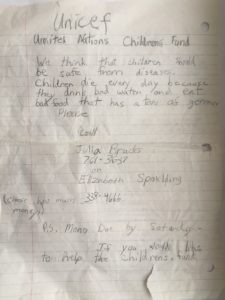
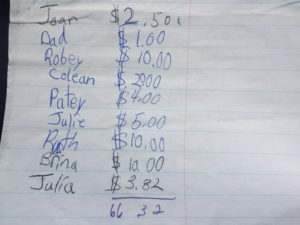
Photos courtesy of Julia Brucks.
My entrepreneurial spirit said, “Throw me in the problem and then figure out where to go.”
Ferguson was a moment that highlighted decades of failings in St. Louis while, at the same time, it created a moment where we could do something different. Ferguson’s municipality, with four school districts and the racial profiling that had been going on for decades, made this place an example of our regional inequities. And the timing was just right. It was the perfect storm building on a lot of the community organizing work already happening. This existing work allowed Ferguson and Black Lives Matter to become a global movement. I feel fortunate to have witnessed that happen and see the shift in the conversation in St. Louis. It’s shaped my perspective, and my entrepreneurial spirit said, “Throw me in the problem and then figure out where to go.”
August 9th was actually the day I moved into my house, so I feel like I’ve moved physically, spiritually, socially, and emotionally with St. Louis. I remember that day and not having Internet, TV, or my phone. I was so focused on getting everything out of the moving truck and in the house, the next day I thought, “What’s happening to my city? My region?” Nobody knew what to do that first week. All of my community organizing friends were getting food, flying organizers in from all over the country, trying to figure out how do we start this movement? I volunteered with the World Community Center trying to figure out the early child care logistics for some people and getting food but was a little bit removed. I didn’t know what my place was, especially as I was about ready to start the Coro Fellows Program.
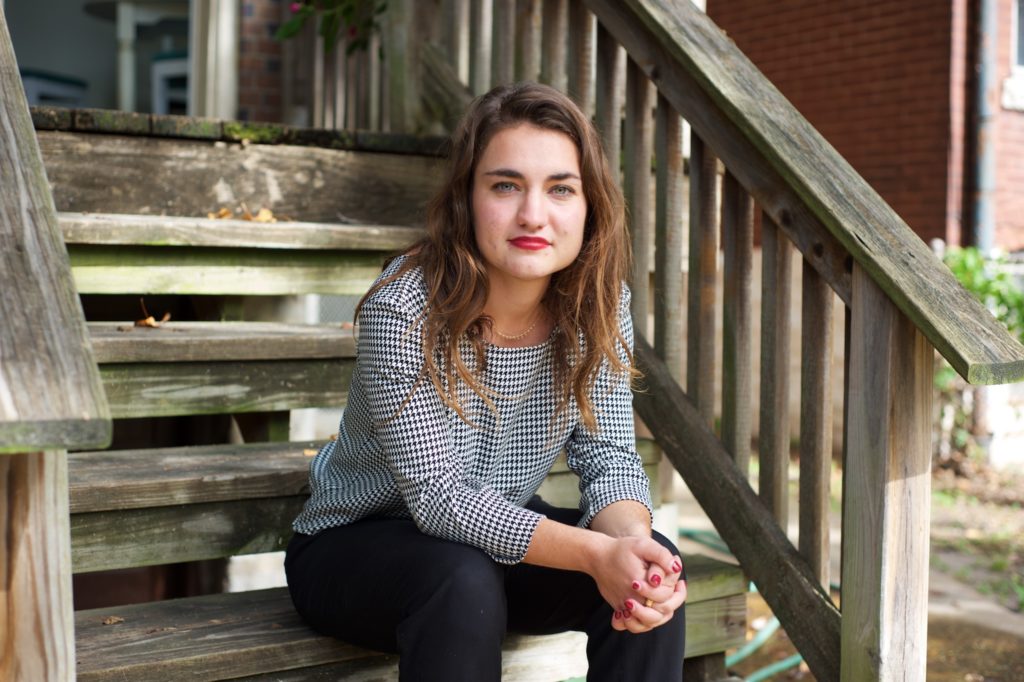
Julia Brucks, photos by Lindy Drew
I remember beginning to see Tower Grove having community conversations on race and there was a preliminary bubbling of things going on. I was sitting on my back porch having just graduated thinking, “No one’s organizing students. Someone should be pulling people together and get this moving. We cannot just be sitting here.” I’m still mad that it took me a week to figure that out but I could still fulfill my old role in college. I called one of my good friends and said, “Tomorrow we’re having people over at my house. I have no furniture in my living room, but let’s just have people over and figure it out.” In 24 hours, we had 25 people sitting on the floor of my living room.
Some folks had been out to Ferguson or had heard or knew friends that got tear-gassed, and we started unpacking all of that. I had a whiteboard. We had snacks. We had an agenda. Our short term strategy was to post positive social media articles about the region and the root causes and social unrest, to volunteer, and release contact information for if people wanted to donate food. The long term strategy was, “How is this a window of opportunity for us to move the region forward?” I’ve been personally and professionally tied to this work before it even became Ferguson because that’s been what my previous two years had looked like. By August 19th, I was mortified it took me 10 days to do something. Ten days to really take ownership. That’s ridiculous. Now, it’s two years later and it’s still ridiculous.
It was a tremendous opportunity to see leaders all across the region grapple with how to move their institution and systems to embody a Racial Equity lens and look at the root causes. I was lucky to at least be coming from an activist mindset. I learned in Coro that so many leaders, if not all of them in St. Louis, cared deeply and wanted to see the region move forward. It was just a matter of piecing together the necessary information and giving them the tools and connections they needed to make that change. I was like, “Put me in, coach. Put me in.” At the United Way, I began working on food insecurity and looking at hunger in the St. Louis region. It was that project that I did at my final placement as a Coro Fellow and then I transitioned as a full-time employee to support that project and others as well.
It may not be perfect, but we have a roadmap to a certain extent and we have something to organize people around.
I just referred to the Ferguson Commission Report this morning. It is our plan. We have a list of strategies. We have heard what we need to do from the community and now we need to go do it. So, whenever I hear, “We need to develop strategies or come up with projects or figure out what we need to do,” it’s like no, no, no. We know what we need to do. We know where we need to go deeper. It may not be perfect, but we have a roadmap to a certain extent and we have something to organize people around. I keep going back to the report as a way to say we need to not hesitate and we need to act together yesterday.
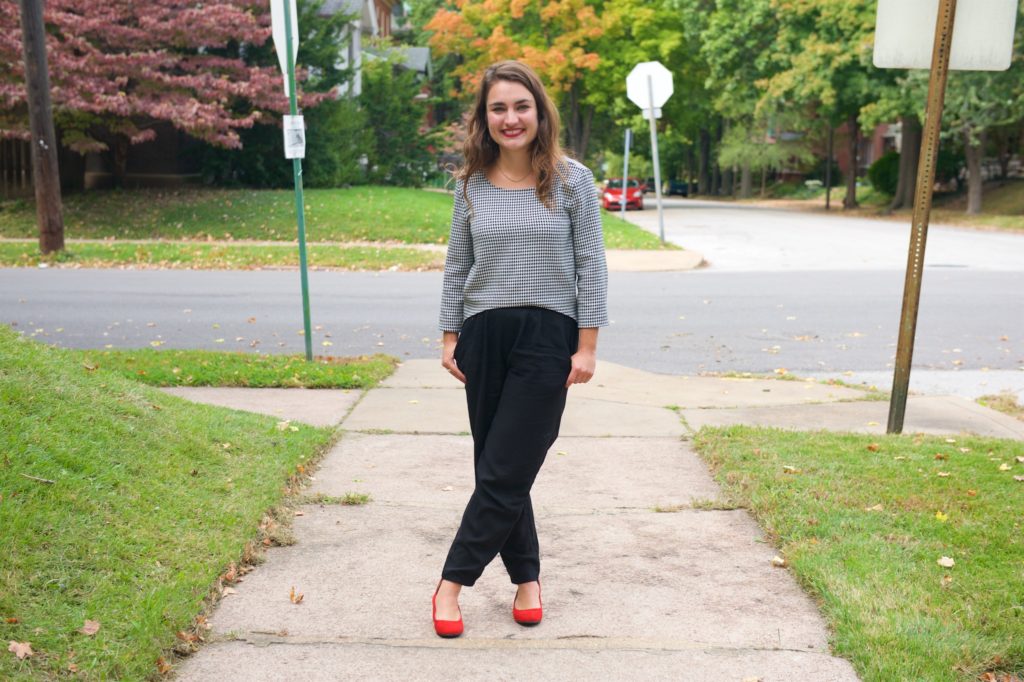
The Ready by 21 Leadership Council wanted to create a policy and advocacy committee, so I spent three months looking at who’s already doing work around the Youth at the Center policy priorities. I wasn’t tracking early childhood programs. I wasn’t tracking every early childhood nonprofit. I was tracking who’s doing early childhood advocacy work, and that’s a distinction. We needed to align policy, practice, and investment, which are interrelated but have distinct players. We began asking questions like, “Who’s already doing policy work and how do we support them? How do we build on strengths?” We’re as fragmented as we want to be. But we’re not starting from nothing. You either pick up the phone and call somebody or you don’t.
So, I tracked down people who were doing policy work around the Commission’s priorities already and brought everyone together three times. At the end of that experience, they were screaming, “Pick something and go do it. It doesn’t matter what. Pick something!” It was clear that there could be a lot of momentum around school suspension reform for preschool through third graders, and pairing that policy change very closely with the practices and behavioral supports needed to be in place in order to support not kicking a 5-year-old out of the classroom, for example.
Pick something and go do it. It doesn’t matter what. Pick something!
Recently, I’ve been working with a variety of different community organizations to figure out how to have 30 school districts in our region change their policies around school suspension reform and to equip them with the necessary practices and investment to follow through on a policy change. I am proud to say I have been to zero school district meetings because it’s about how we empower other people to be prepared and have the tools to have meetings with superintendents and other leaders in their school district. This is an issue that’s boggled our region and this concept of restorative justice practices, anti-bias and anti-racism training, trauma-informed schools, and all these different practices are national conversations, too. We need to figure out, as community leaders and partners who care, how we can best support schools in making sure they can follow through on policy changes called for by our community and through the Ferguson Commission’s report?
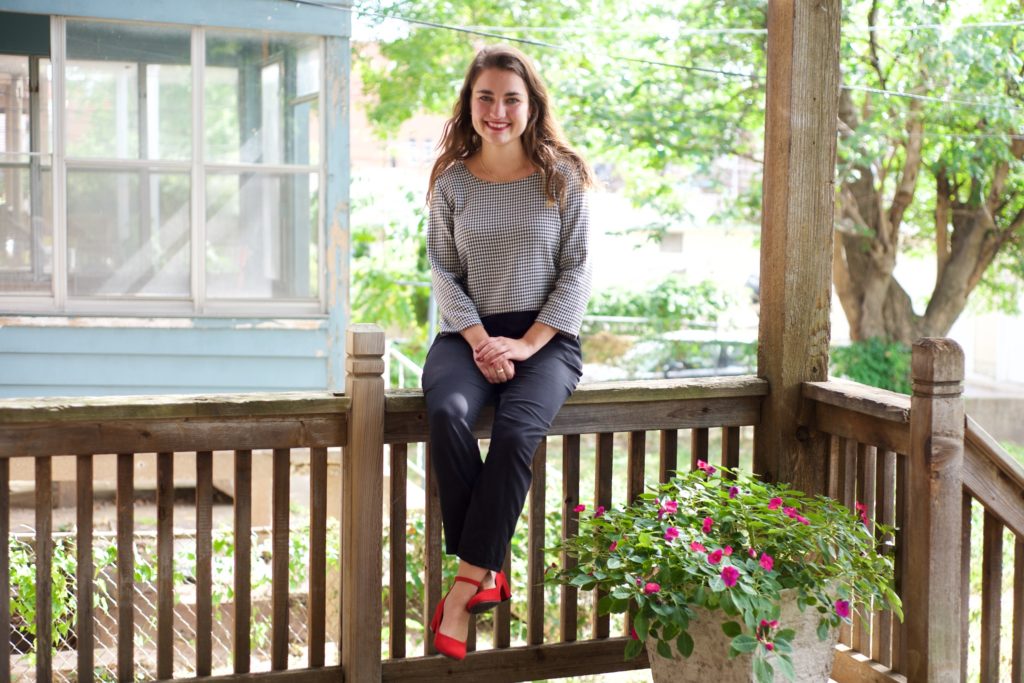
We looked where there were existing efforts already happening in the community around the signature priorities of Youth at the Center. Early childhood already had strong advocacy work happening in Jefferson City with the Missouri Children’s Leadership Council. Ending hunger – there had been some regional advocacy around the Child Nutrition Reauthorization Act, the big federal bill that impacts hunger across the country. The governor also prioritized No Kid Hungry Missouri, which supported a full-time staff person to look at food policy statewide and to look at SNAP, WIC, and national school lunch program regulations. School and community health clinics and the work of For the Sake of All had a ton of momentum working to sustain and scale that effort. Also, looking at policy, we recognized there was a lead player there.
How can we work more strategically together to take this call to action over the finish line?
However, there was a huge gap around education. The call for Youth at the Center was saying, “We need to go really deep to figure out how we are going to move our education system forward.” We saw an opportunity to look at how we are supporting schools as community partners with the first step being around school suspension reform and implementing practices, such as restorative justice and trauma-informed care. I had seen so many people disaggregate data by school district, by grade level, by race, and there was a need to support that to take it to the next level. I went to many meetings with advocates where I saw this data for school suspension up on a wall and really saw an opportunity to bring people together who were all working on this already. “How can we work more strategically together to take this call to action over the finish line?” We brought together not just advocates who had been reaching out to school districts but practitioners, too, to say, “Okay, so what if we change the policy? What if that would impact, say, a 5-year-old in the classroom because the teacher doesn’t have supports? Or, how do we actually support teachers?”
I had this chart that tracked who was doing the work where, in what schools, and in what zip codes to start piecing together what it meant not just to be aligned, but to take action together. I am hoping that work about suspension will be going deeper into looking at practices around trauma-informed care and restorative justice. It all allows us to think about how we are supporting our education system to teach kids. There are already a lot of lessons learned to keep kids in the classroom and I’m excited to see where that can propel us in the region.
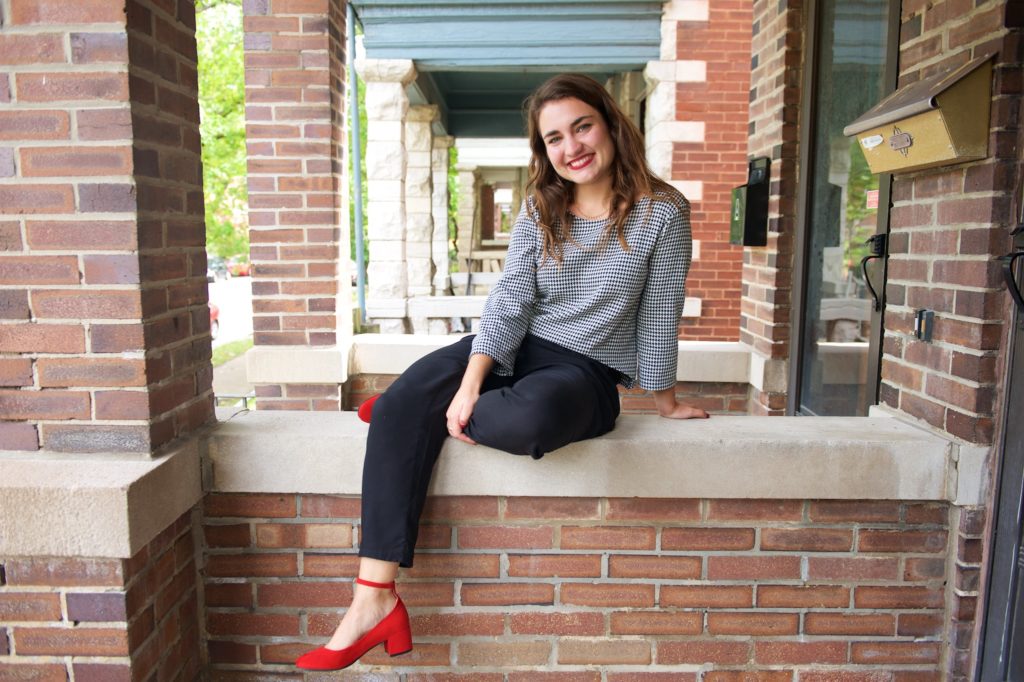
I get challenged all the time. I’m a dreamer. I sit and think of ideas, or I lie in bed and don’t fall asleep while thinking about ideas. I have a tendency to skip six months or five years down the road and lead with where I think the world should be and not what the first step is. So, I often find myself being challenged when I’m biting off more than I can chew and starting with the long-term vision. I don’t realize I’m doing it. But when I put my mind to something, I’ll do whatever it takes to try and make it happen.
Through the Commission’s report, about 3,000 people already said certain issues should happen. The issues then got prioritized. There was some SPSS, z-score, or t-score formula that my Ferguson Commission friends spent so much time figuring out. Someone else made the case for me. This topic was picked, so what does it take? The data for suspension, for instance, show that it is a key issue, and research shows it impacts children down the road. I’ve heard stories from friends who have suspended a 5-year-old before and I’ve talked with them about the reasons.

There was a moment when I was doing preliminary informational interviews to figure out who’s doing the work around Youth at the Center policy priorities already and I thought about the progress around where the conversation is in St. Louis right now. I felt lucky to have been a part of this movement, to have both of those perspectives before and after Ferguson, and to be able to try to be the bridge. It’s only through working together and leveraging different individual and institutional strengths that we are going to be able to tackle the root causes. They’re tough and they didn’t happen by accident, so they won’t just change by accident either.
I have a quote by Margaret Mead hanging in my office:“Never doubt that a small group of thoughtful, committed people can change the world; indeed, it’s the only thing that ever has.” I believe that. It seems crazy and ideas are not linear and they cannot be process mapped perfectly, but you’ve got to try. Our kids deserve that we try and that we’re smart, and if we get it wrong, we course correct. But, we try. We got lots of issues, so pick one and go. Or, even better, pick one and see who else is working on it.
It’s only through working together and leveraging different individual and institutional strengths that we are going to be able to tackle the root causes. They’re tough and they didn’t happen by accident, so they won’t just change by accident either.
On November 13th, we brought together over 600 community leaders from all across our region to say we have worked together to look at school suspension for preschoolers through third graders. School districts are committed to reducing out of school suspension through changing policies and community partners are committed to supporting schools in doing that. We needed to look at this issue in our community, we did, and we found that this is going to require a sustained commitment of lots of folks – investors, practitioners, policymakers – to move it forward. It’s a celebration for where we’ve been and it’s a commitment that we still have a lot of work to do.
Just changing a policy is not enough. It’s supporting schools and giving them the resources they need to keep kids in the classroom. So, how are we reimbursing mental health services in schools? How are we supporting future teachers and current teachers in anti-bias, anti-racism training? I’m really excited about the framing of “keep kids in the classroom.” Whether it’s in school suspension or out of school suspension, how do we support a child to be in the classroom to allow them to succeed? Every educator, principal, superintendent, mom, and dad want their child to be in an environment where they can learn. We need to figure out how we can support every child in our region to be able to stay in the classroom and do that.
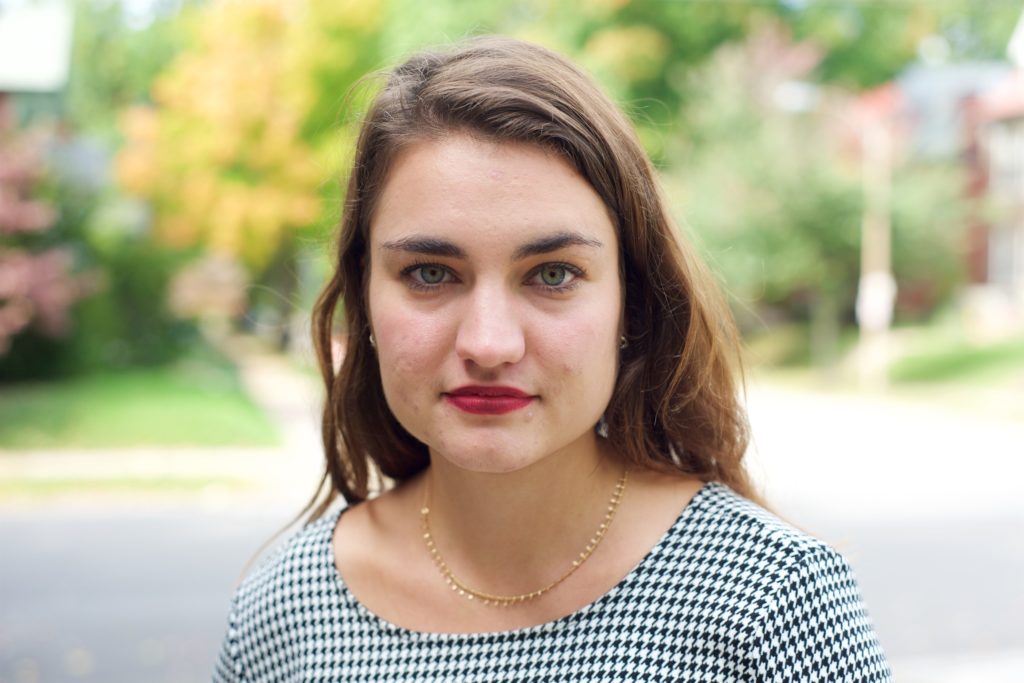
I entered this work from a place of equity, in terms of equity as in ability. My younger brother, David, is special needs, and I grew up in an environment having an innate belief that I got lucky — that I won the lottery. I was born in a zip code that determined a great future for me and was born to two loving parents who I watched advocate for my brother and still do to this day. I bring a sense of opportunity and privilege to this work because I’m White, I’m college educated, I’ve been supported, and I recognize that that is brute luck. There are many kids around the world and in our community who do not have the same opportunities and that’s because of no fault of their own. It’s the world we have created that is unfair, and we need to change.
I’ve never been suspended, but think about how young these children are. Two or three feet tall? Sixty pounds? I was a rule follower in first grade. I was that girl who always raised her hand and I would be paired with the troublemakers to try to support them. I fundamentally believe every single person brings something to the table. I think that goes back to my little brother, David, and seeing how he can transform a room. People call him the “Mayor of the Block.” I am David’s sister back home. I’m not Julia. I am David’s sister. “Okay, little bro,” who’s six feet tall, towering over me. Well, everyone brings something unique to the table, even the kids getting suspended. They bring something to the conversation and to the classroom, and it’s figuring out how to bring out the best in people, whether you’re a teacher or doing cross-sector work with a coalition. It’s how you bring out people’s strengths, empower them, and inspire them to live it out to their fullest.
I didn’t want to come to St. Louis in the first place, but St. Louis has been my home base for about six years. I applied to seven different colleges, but I was drawn to St. Louis for some reason. Maybe it’s the French influence or the neighborhoods. I think people care. There’s a Southern hospitality, and you can do things here when you’re young. We have plenty of things to do. Sure, we don’t have a happy past. There are many things to be proud of and many things not to be proud of. But, I feel lucky to be a part of this, hopefully, transformational part of our story of us saying, “We need to talk about race. We need to talk about what has not worked. We need to continue doing that, but we also need to take action, prioritize, and go.”
How do you make sure you are actively seeking out diverse perspectives? Am I perfect at it? No, not at all. Is it something I’m conscious of? Absolutely.
Applying the Racial Equity lens constantly means, “Where am I getting my information from, who’s telling it to me, what are the stories or experiences from the people you surround yourself by, and what experiences are they pulling from?” How do you make sure you are actively seeking out diverse perspectives? Am I perfect at it? No, not at all. Is it something I’m conscious of? Absolutely. I think it’s something that folks need to figure out how to tailor to apply a Racial Equity lens to their work. The Racial Equity lens also means we need to look at race first. For the suspension work, specifically, sunshine data from the Department of Elementary and Secondary Education looks at out of school suspensions by race, and that’s how we need all of our data now.

My new idea is connecting everyone else’s ideas. There’s probably somebody already working on a program, policy, or effort, so figure out how to tap into our existing strength collectively and move forward together. There are so many great things happening in St. Louis, and it breaks my heart when someone goes off and starts their own new thing. Do some detective work to figure out what’s already going on and what role you can play. Detective work can have such a great impact because we have so many fantastic strengths to build off of, and having that intentionality is a critical game-changer. If you care about early childhood development or housing or the sewers, there’s really great stuff happening all across the region.
-Julia Brucks, Director of Public Affairs at the St. Louis Regional Health Commission, and former Manager of Operations and Continuous Improvement at Ready by 21 St. Louis

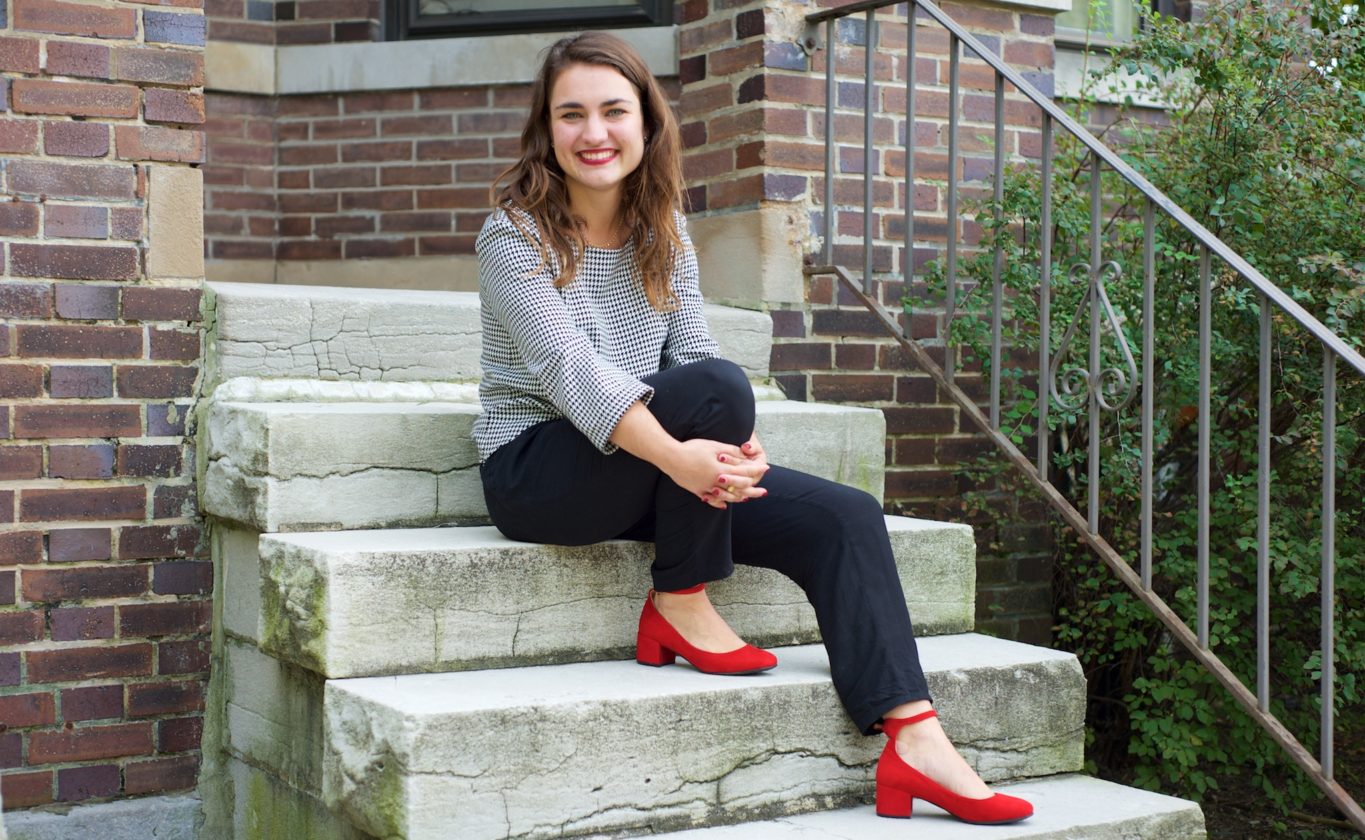
#FwdThruFerguson